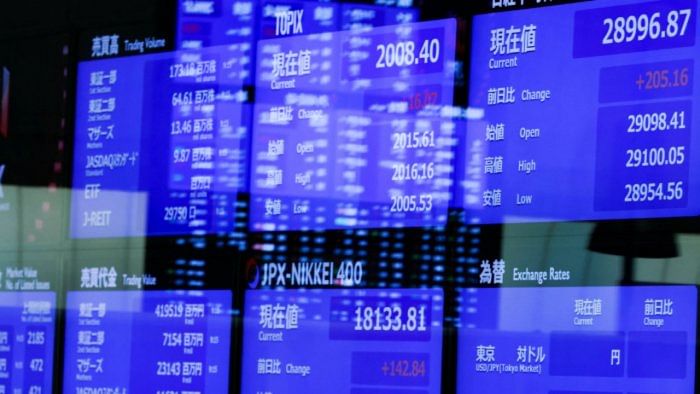
In a note, ahead of the Q2 GDP data release on November 30, domestic rating agency Icra economist has pegged the GDP growth at 7 per cent, while British brokerage Barclays see it at 6.8 per cent.
Credit: Reuters File Photo
Mumbai: The economy has likely decelerated by 80-100 bps year-on-year in the second quarter to 6.8-7 per cent, with utilities, services and construction sectors showing robust growth on the back of strong domestic demand, while external demand continues to remain weak, according to economists.
In a note, ahead of the Q2 GDP data release on November 30, domestic rating agency Icra economist has pegged the GDP growth at 7 per cent, while British brokerage Barclays see it at 6.8 per cent.
We estimate that Q2 FY24 expanded by 6.8 per cent year-on-year, slower than the 7.8 per cent in Q2 FY23, but still showing robust sequential growth. Underlying growth trends continue to look robust with activity underpinned by domestic consumption, high levels of state-led capex and strong growth in the utilities sectors, Rahul Bajoria of Barclays said in a note Tuesday.
He expects the growth rates to be driven by basic utility sectors ( mining and electricity generation) and manufacturing, construction and public spending.
These will likely help mitigate the loss of momentum in financial services and trade and transport. However, export growth is likely to stay weak but the overall impact of sustained improvement in services exports, coupled with lower imports, implies that the contribution of net exports to GDP was a much smaller drag in Q3 than it has been in the preceding quarters, he said.
For the full year, he expects GDP to clip at 6.3 per cent, with upside risks emanating largely from strong consumption demand, which is visible across a variety of high-frequency data. Credit growth, electricity consumption, and mobility indicators all paint a picture of economic resilience. Hence, we believe that the domestic economy will continue to drive growth, Bajoria added.
According to him, it is the domestic demand that is driving the economy, with services continuing to be the largest contributor to growth, despite slower expected growth in financial services and trade hotels and transport categories. Services growth is likely to moderate from double-digit levels in Q2, but still strong at 7.7 per cent.
He also expects industrial growth to pick up, led by utilities, manufacturing and construction. Within utilities, electricity generation, in particular, likely exhibited strong growth in Q2, as a delayed monsoon and patchy rainfall increased power demand.
Growth in manufacturing is also likely to improve sequentially, which was evident in 6.3 per cent IPP growth in Q2, supported mostly by growth in investment-related sectors like manufacturing of machinery, electrical equipment and vehicles.
Icra Rating chief economist Aditi Nayar expects growth to print at 7 per cent in Q2, exceeding the MPC estimate of 6.5 per cent. She sees GVA growth easing to 6.8 per cent in Q2, driven by the services sector at 8.2 per cent, agriculture at 3.5 per cent, and industry at 6.6 per cent.
A normalising base and an erratic monsoon are expected to result in a sequential moderation in GDP growth to 7 per cent in Q2 FY24 from 7.8 per cent in Q1 FY24.
Uneven rainfall, narrowing differentials with year-ago commodity prices, a possible slowdown in momentum of government capex due to the general elections, weak external demand and the cumulative impact of monetary tightening are likely to translate into lower GDP growth in Q2, she said, adding that as a result, FY24 GDP growth is likely to print in at 6 per cent, lower than MPC projection of 6.5 per cent for the fiscal.
Aggregate capital outlay and net lending by 25 states rose to Rs 1.7 lakh crore in Q2 from Rs 1.2 lakh crore in Q1. Although the pace of expansion halved to 33.5 per cent from 75 per cent, respectively, it remained robust, benefitting from an early transfer of funds under the interest-free capex loan scheme and front-loaded tax devolution. The Centre's gross capex rose 26.4 per cent to Rs 2.1 lakh crore in Q2, down from Rs 2.8 lakh crore in Q1.